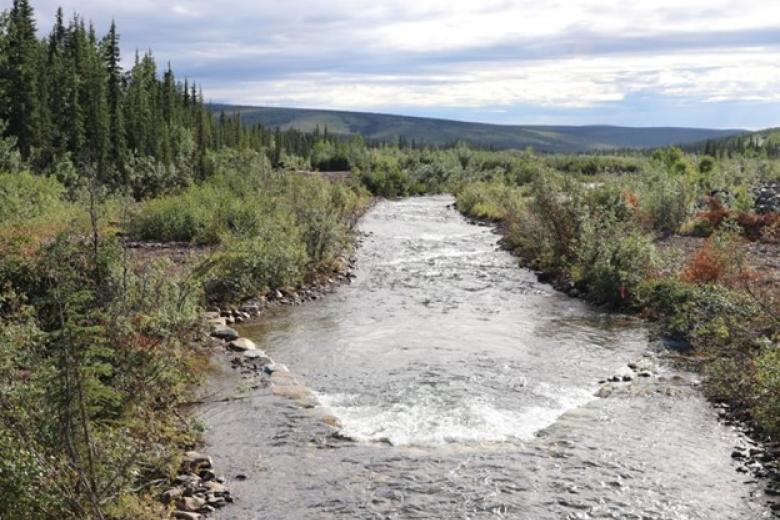Biden-Harris Administration Invests $3.25 Million for Salmon Habitat Restoration
Organization:
BLM Office:
Media Contact:

ANCHORAGE, Alaska – The Bureau of Land Management today announced that $3.25 million in Bipartisan Infrastructure Law funding is being awarded to support the Department of the Interior’s Gravel to Gravel Keystone Initiative to improve ecosystem health and Pacific salmon resiliency in the Yukon, Kuskokwim, and Norton Sound regions in Alaska.
Salmon in the Yukon, Kuskokwim and Norton Sound regions in Alaska hold deep cultural, subsistence and ecosystem significance. In partnership with Tribes, Indigenous leaders, other agencies and community partners, the Department’s new initiative is bringing Indigenous Knowledge and the best available science to the table to inform plans for collective action to support resilient ecosystems and communities in the region and make immediate investments to respond to the salmon crisis. Today’s funding implements – through partner award – part of the $36 million in Bipartisan Infrastructure Law funding dedicated to the Gravel to Gravel initiative. The project work, implemented in partnership with the Salcha-Delta Soil and Water Conservation District under Good Neighbor Authority, includes efforts to restore areas impacted by historic land uses.
“Restoration is an important aspect of the BLM’s mission, and this partnership allows us to continue our effort to improve watershed health,” said Matt Varner, Fisheries Resources Lead for the Aquatic Resources Program. “This Keystone Initiative is about working with everyone to urgently address Pacific salmon habitat restoration. Agreements, such as this, help expand the collective work to support the Pacific salmon populations that are so vital to our culture, ecosystems, and economy.”
BLM’s current restoration focus has been within the Birch, Beaver Creek, and Fortymile Wild and Scenic River systems. These rivers are (or were historically) habitat for salmon. This additional investment supports expanded restoration and resiliency efforts beyond these Interior Alaska river systems to areas located throughout the Keystone Initiative region. Future work is expected in more remote areas of the Keystone Initiative region, including the Salmon River near the community of Platinum.
The BLM and partners are also working to finalize the development of a mapping tool coupled with a prioritization framework using a variety of factors such as salmon habitat potential, land status, and access. Once fully developed, the tool and framework will be shared with regional stakeholders interested in restoration to leverage local knowledge, including Indigenous Knowledge, to target future work in the areas with the highest salmon habitat restoration and resiliency needs.
Near-term efforts continue to focus on the headwaters of salmon-bearing rivers along the road system. This allows the BLM and partners to intensively monitor and refine restorative techniques while minimizing overall costs. This data-driven adaptive management approach helps to guide the strategies and techniques used on more remote restoration projects to help maximize restoration and resiliency results.
Project work under this new agreement is estimated to begin in early September 2024 and continue through the end of summer 2029.
The BLM has made immediate investments in the foundational science and projects needed to respond to the salmon crisis and invested in restorative projects to heal the broader ecosystem. BLM’s focus remains on the expansion of stream habitat assessments across the entire Yukon, Kuskokwim, and Norton Sound regions to create a network of hundreds of permanent monitoring sites. The information gathered will inform restoration plans and serve as long-term habitat monitoring sites across the region to improve our understanding of climate-driven change.
Learn more about BLM’s project work and restoration efforts by visiting the BLM Alaska Gravel to Gravel Keystone Initiative webpage.
The BLM manages about 245 million acres of public land located primarily in 12 western states, including Alaska, on behalf of the American people. The BLM also administers 700 million acres of sub-surface mineral estate throughout the nation. Our mission is to sustain the health, diversity, and productivity of America’s public lands for the use and enjoyment of present and future generations.
